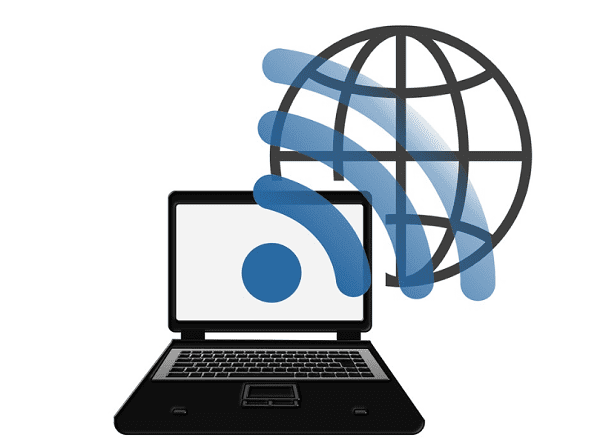Troubleshooting Methods for Computer Network Connection Issues
Apr. 06, 2024 / Updated by Seraphina to Windows 10
Many users may encounter a common issue when using a computer: the computer successfully connects to a Wi-Fi network but cannot access the internet. How can this problem be resolved? The cause of this issue could be related to network settings, hardware problems, or other issues. We need to diagnose and resolve the problem based on different scenarios. Below, we'll introduce some possible causes and solutions to help you successfully access the internet.

1.Confirm Network Status:
Firstly, we need to determine the nature of the problem. If the computer shows that it's connected to Wi-Fi but cannot access the internet, the issue may lie in network settings or hardware.
We can conduct preliminary diagnosis through the following steps:
1). Check if the router is functioning properly and if other devices can connect to the internet.
2). Ensure that the computer is properly connected to the network device (such as router or modem). Confirm that the computer's network settings are correct, including IP address, subnet mask, default gateway, and DNS server settings.

2. Restart the Router and Computer:
Secondly, try restarting the router and computer. At first, unplug the power cord of the router, wait a few seconds, and then plug it back in. After waiting for a few minutes, restart the computer to see if it can connect to the internet. Cache on the router or computer may cause connection problems, and restarting can clear the cache to resolve the issue.

3. Reset Network Settings:
In Windows 10 system, you can try resetting network settings. Here are the steps:
1). Open "Settings" > "Network & Internet" > "Status".
2). Scroll down to "Network reset".
3). Click on "Reset now", and the system will prompt you to restart the computer.

4. Update Wireless Network Adapter Driver:
Additionally, the wireless network adapter driver on the computer may be outdated or damaged, leading to internet connection issues. We can try updating the wireless network adapter driver through Driver Talent.
1). Open Driver Talent, click "Scan". If prompted that your network card driver is not updated, click "Download" to update it.

2). After the update is completed, restart the computer for the network card driver to take effect. You can also view detailed information about the network card driver.
5. Change Adapter Options:
Another possible solution is to change adapter options:
Open "Network and Sharing Center" > "Change adapter settings".
Right-click on the network connection in use and select "Properties".
Uncheck "Allow the computer to turn off this device to save power".
6.Using Network Diagnostic Tool:
The Windows system provides a network diagnostic tool to help detect and repair common network issues. By right-clicking on the network icon, you can find the network diagnostic tool. Then, run the tool and follow the prompts to proceed.

7. Check IP Address:
If restarting does not solve the problem, you can try checking the computer's IP address settings. In the Windows system, press "Win+R" key combination, type "cmd", and press "Enter" to open the command prompt window. Then enter the ipconfig command to view the computer's IP address and gateway information. Make sure the IP address allocation is correct and the gateway address matches the router settings.

8. Set IP Address Manually:
When automatic IP address acquisition fails, you can try setting the IP address manually. In the "Network Connections" properties, select "Internet Protocol Version 4 (TCP/IPv4)", and then enter a fixed IP address and DNS server address.
9. Forget and Reconnect Wi-Fi Network:
Deleting the Wi-Fi network from the known network list and reconnecting it may solve the problem. In the Windows system, you can find the list of known networks in network and internet settings, select the network you want to forget, and then reconnect to it.

10. Check Firewall and Antivirus Settings:
Sometimes, the computer's firewall or antivirus software may block network connections, preventing internet access. Temporarily disable the firewall and antivirus software, then try to connect to the internet again. If successful, it indicates that the problem may be with the firewall or antivirus software settings, and you can adjust the settings accordingly or switch to other security software to resolve the issue.

11. Check DNS Settings:
Incorrect DNS settings on the computer can also cause internet connection problems. In the Windows system, you can check the DNS settings in Control Panel -> Network and Internet -> Network Connections, and check the DNS settings in adapter settings.

These are the solutions for the computer showing unable to connect to the network issue. Hope it's helpful to everyone. If you encounter driver-related issues with network cards, graphics cards, Bluetooth, sound cards, etc., you can use "Driver Talent" to detect and repair them. Meanwhile, Driver Talent supports driver download, installation, backup, etc., providing flexible driver management.
See also:
How to install sound card drivers
Steps to clean up a full C drive on the computer
Dota 2 crash troubleshooting guide
No Internet Connection-5 Common Solutions
One-Click Audio Recovery for Computer

|
ExplorerMax |

|
Driver Talent for Network Card | |
| Smart and advanced file explorer tool for Windows platforms | Download & Install Network Drivers without Internet Connection | |||
| 30-day Free Trial | Free Download |







